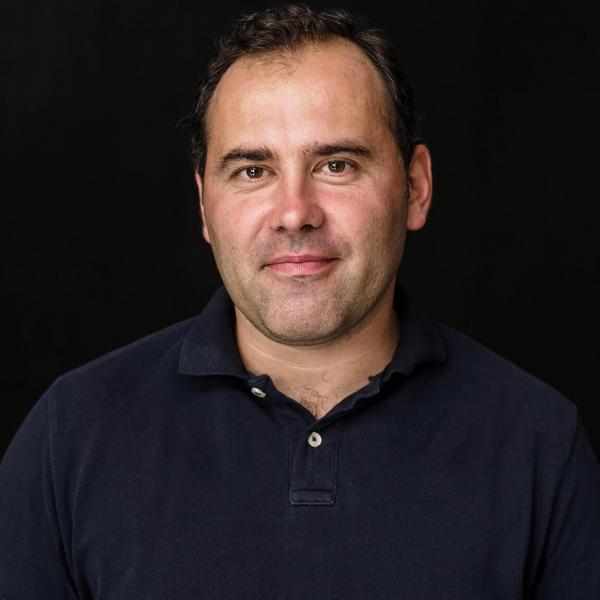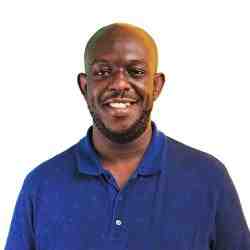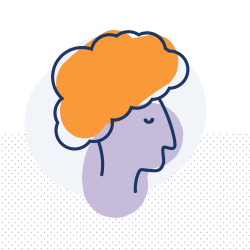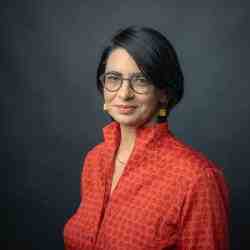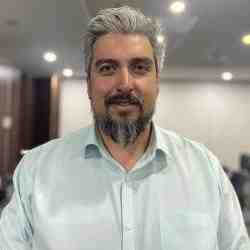Introdução
Growing up and living in the Transylvania countryside, Eugen experienced the feeling of lost identity that leads people to ignore their heritage, dismiss their history and migrate to the city or other countries. Eugen is using monuments to build a social movement to rekindle an authentic rural identity and bring people back to their roots.
A nova ideia
Eugen is driving an increase in dignity and pride, as well as deep awareness about the Romanian identity and its contribution to social, economic, cultural, and environmental sustainability. Eugen has identified a neutral point of connection, often hidden in plain sight, around which he can rally people across all lines of difference to forge a more inclusive rural identity. The rallying points for Eugen are local monuments like churches, mills, and traditional houses. The breakthrough innovation lies in Eugen’s invitation for rural citizens to step up into a new people-powered process of safeguarding monuments. In so doing, he rekindles the local rural identity of people and brings them closer to their customs, disrupting the current pattern of feeling one has to embrace abroad and city-bred practices and mentalities, and disregarding the potential of communal growth based on local heritage, culture, and crafts.
Eugen is working at the core tensions of humanity divides, rural vs. urban, capitalism vs. communalism, tradition vs. “modernity”, even the tension between wood windows vs. glazed glass panes. He manages to “un-antagonize” these relationships and frameworks, by creating a respectful fusion of old and new, treating both with the respect, kindness, and candour they deserve. Every community, ever, has had to grapple with outside influences and the need – or opportunity – to change, even remote Romanian villages. Eugen not only surfaces the lost and devalued pride and identity that was crushed by communism, modernity and now, globalization but re-surfaces rural communities’ rich traditions of cultural diversity, working together, and embracing change. He is careful not to romanticize a picture of a less complicated past; though he is anchoring the collective community identity journey in the few forgotten or devalued physical elements. Eugen notes that they use monuments, the easiest and most tangible local collective asset, as a means to engage all the people in the community in a joint effort to reclaim their voice. What is precious is community cohesion, and what is preserved in this process is not just monuments, but the beautiful diversity of people that is getting more and more scarce nowadays.
Based on how ambulances work, by saving people in urgent situations, Eugen developed The Ambulance for Monuments to transform a safeguarding process for buildings into a national social movement for safeguarding communities, predominantly rural, where every person has a role and can contribute, no matter their walks of life, profession, skills, or knowledge. His goal is to change mindsets about rural heritage, traditional practices, and customs, and to develop healthy and functional communities that thrive by nurturing and mindfully using their local cultural assets for sustainable development.
O problema
Throughout its history, due to its geopolitical position, Romania has witnessed many conquerors who seized the opportunity to impose their own cultures. The Ottomans to Austro-Hungarians, Russians, and others have all left a mark on the local heritage and nowadays Romania is an amalgamation of these cultures. In the period after Romania gained its independence, villages and life in rural areas were valued for their uniqueness. But once communism came, much like the rest of the European countries under totalitarian regimes, a cultural shift happened. Through collectivization, private agricultural properties were confiscated and merged into state-run agricultural farms. The government resorted to violence, murders, deportations, imprisonments, and confiscations of the entire property of those who opposed it.
Later, the communist party wanted to urbanize, reorganize, and standardize urban and rural localities. In practice, the initiative consisted in the partial or total demolition of villages and towns in their configuration, and their reconstruction following communist principles of "multilateral social development" of Romania. Not respecting the rural traditions, multiculturalism, and ethics of urbanism, the systematization was a real disaster for the Romanian heritage. Moreover, substantially changing the structure of society through the forced industrialization and urbanization of the rural environment led to many social problems, which have their origin in this unnatural forced city growth. Systematization began as a program to relocate rural dwellers. The initial plan aimed to offer the rural environment all the advantages of the modern era. The cities faced a strong influx of rural dwellers and hundreds of villages were in the process of being transformed into cities, by building schools, hospitals, blocks of flats and industry infrastructure.
After the fall of communism, the consequences were dire: people born and raised in the countryside wanted to evade to cities, the quest for individualism and material accumulation became ubiquitous, interest in the community became subsumed to individual needs and shared spaces, buildings and heritage were left to be taken care of by public authorities. Thus, inequalities rose between urban and rural dwellers. Around 46% of Romanians live in the countryside, mostly elders who are still steeped in the local history, customs, and crafts, but don’t have the context to pass on their knowledge and contribute to the social sustainability of their community. Once Romania joined the European Union in 2007, young people migrated abroad for better jobs, leaving behind their villages, and, in many cases, letting grandparents in charge of their children’s upbringing. World Bank and the UN estimate that between 3 to 5 million people (18% of the population) migrated in the past 20 years, and it is estimated that by 2050 the rural population will decrease by 25%.
As individualism crept deeper, the state of disarray and decadence of society contributed to the collective neglect of monuments. In 2015 there were 30,147 recognized monuments in Romania, although there is no process in place for the public authorities to work at the grass-root level and list more buildings as monuments. Listed monuments include constructions like churches, mills, traditional houses, strongholds and train stations and they appear in every community all across the country. Yet communities all over Romania, mostly rural, are disconnected from this physical heritage, which leads to losing more buildings and customs. In 2016, over 600 historical monuments needed emergency rescue and their number is increasing. Historic buildings need interventions and maintenance work more often than modern buildings and once the degradation process started it’s very difficult to restore and conserve them.
As communism deconstructed and damaged rich local identities, the crafts and guilds were affected as well. Craftspeople were used for their general skills wherever in Romania they were needed, rather than harnessing their local technique and artistry. Their place in society migrated from the centre to the outskirts, as the images of rural villages faded in the face of the modern cities. Urban customs and trends became the new norm and villagers were quick to adopt them. Even more, architecture and conservation were heavily influenced by the urban idea of modernity and local traditional crafts were not valued longer by local communities. This further contributed to the feeling of alienation and frustration for local craftspeople, who weren’t able to practice their crafts and sought less meaningful but higher paid jobs abroad. European funding for building conservation became available, but many buildings are preserved without local input or through alignment to urban aesthetics and comfort standards without complying with any deontological principles, which contributes to deepening the divides.
A estratégia
As an architect who grew up in the countryside, Eugen knew that traditional cultures express themselves through communal constructions, as they represent a physical manifestation of their identity and their connection with their history, customs, and traditions. To trigger a bottom-up transformation of the growing inequality and deepening divides between rural and urban communities, Eugen uses monuments, the most tangible communal good, and brings together villagers, children, craftspeople, students, and public institutions. His goal is to reconnect communities to their heritage so that they use this regained trust to rebuild pride in who they are. For that, Eugen developed the Ambulance for Monuments, a program through which he implements 2- to 4-week long interventions with clear objectives: 1. involving communities in actions to sustainably safeguard heritage, 2. safeguarding heritage and creating a local heritage record, 3. increasing the level of professional training for specialists through non-formal and informal participatory education, "hands-on training", 4. recovering traditional techniques and local materials and 5. increasing philanthropy and creating new audiences for heritage.
Each intervention is run by an Ambulance team – there are 7 Ambulance teams with 50 people and around them there is a community of 400 volunteers, with an 80% retention rate from one year to the next. An intervention can mobilize up to 60 people and always starts with a thorough research of potential communities and monuments. Once a decision is made, an initial diagnosis of the village’s problems is carried out together with local stakeholders - the monument owner, the municipality, the church, and the citizens. Eugen quickly identifies who the gatekeepers – the most trusted people – of a community are and builds relationships with them. The diagnosis phase is a crucial step. Although each intervention has some precise technical elements related to the monument, each community has its particularities in terms of language, customs, ethnicity, and race which are at the core of all further actions.
Once the cultural mix is understood, the Ambulance team builds the plan in tight collaboration with the community and shares the ownership of the plan with different local stakeholders, to show ways in which they can contribute to rediscovering their identity and pride. Thus, the solution is not given to the community, but rather co-owned. Municipalities provide materials for interventions, local entrepreneurs donate money for other related costs, the priests, the most respected people in the village, keep the connections of the Ambulance team and volunteers with the villagers. Because community cohesion is the most important part of the intervention, citizens are engaged in raising funds alongside the Ambulance team, are encouraged to volunteer during the monument safeguarding process and most importantly they are asked to host the Ambulance team and volunteers in their houses and share their food with them.
Eugen realized that to bridge the increasing divide between urban and rural citizens, both sides need to experience communal living, while being similarly engaged in the same project for enough time to develop ties. That is why during an intervention, the entire Ambulance team and the volunteers, who come mostly from cities, spend their whole time inside the community. They sleep in villagers’ traditional houses, cook, and eat together local food and share the countryside life. On one side, the Ambulance team and volunteers become very curious and learn stories about local history, local customs and encourage the locals to share more about who they are, igniting their pride for the uniqueness of their community and region. On the other hand, the volunteers help the villagers with information and knowledge about accessing different public services and opportunities. More than that, the volunteers experience the local abundance which increases their sensitivity to cultural diversity, a relevant skill for heritage work. If holidays happen during interventions, the Ambulance teams and volunteers visit other monuments from the village or the region and take part in local customs, or celebrations, which adds more depth to the immersion process from both worlds.
Crafts, local techniques, and materials are essential for a safeguarding process. That is why Eugen encourages and supports craftspeople to develop their practices so that they stay connected with the world (e.g.: issuing invoices, getting notices for wood transportation, etc.), but also keep the authenticity of their crafts so that they can transform their practice into a well-respected and paid profession. Local craftspeople who are hired during interventions work together with the Ambulance team and volunteers. This way, a practical learning space that makes it possible for traditional crafts to surface and be connected with architecture and other professions is created for heritage work. At a national level, in collaboration with a team of 200 architects affiliated with the National Order of Architects, Eugen led the creation of the national map of craftspeople in construction work. In addition, to set an example of how local crafts can turn into profitable businesses, Eugen founded one of the first traditional handcrafted tile and brick kilns in Europe. It grew from a single contracted craftsperson to a sustainable business that created jobs for the rural community where it is located. The business was donated and is administered by a tile maker and its geographic position makes it possible to revive an endangered craft that can only be passed on from generation to generation.
Eugen knew from the beginning that one organization with a small team can’t support the immense need for rural revival. In this context, investing in the connections between experts, volunteers and local craftspeople was the strategy with the highest long-term return. While the existing architecture universities in Romania focus only on theoretical learning, Eugen sees that without practical learning one can't develop the love for rural heritage and identity. That is why, in partnership with the Romanian Order of Architects (ROA), he developed a mechanism that would support practical learning. Each year, eleven summer schools get funding to organize activities for students which happen in villages and have hands-on learning activities with experts and craftspeople. Criteria are set to make sure that the programs are run similarly so that the students develop the right skills. At the same time, Eugen brought up to the ROA the importance of offering scholarships for students who couldn't afford to access such experiences, and the initiative was implemented and runs annually. As the Ambulance for Monuments model is easy to replicate, students and experts take up the model and develop their own organizations to run interventions in their region. Using a franchise framework, 3 existing organizations and 4 newly founded ones run Ambulances for Monuments across the country. All of them are interconnected and get 50% of their funding from Eugen’s organization, while they are responsible to fundraise for the rest of the amount.
As money for conservation becomes more widely available, Eugen sees it as an opportunity of connecting heritage work to community work and develop interventions that are inclusive with marginalized groups, making space for all to contribute to the local identity. One other important focus is creating gender-equal leadership in a field dominated by men. To make all these processes even smoother, Eugen helped change the policies regarding the bureaucracy needed for interventions. Nowadays, 80% of safeguarding interventions don't need a construction permit anymore, just the agreement from the local cultural directorate, which makes it easier for owners of monuments to start a safeguarding process. Each year, the team of teams led by Eugen works with 20-22 communities. Because every community member has a role, an intervention of the Ambulance is a very efficient investment, in need of only around 15,000 euros. Moreover, the community continues to reclaim their heritage as they find something to be proud to work on after the experts leave.
The COVID-19 pandemic set off a change in citizens’ mentality who, while working remotely, used their time to disconnect from economic activities and shift to cultural and spiritual values and practices, to be more aware of their own needs for local identity and the feeling of belonging. City people who live in narrow collective buildings had time to discover the benefices of the rural regions and started buying old houses which they have nicely adapted to current living standards and needs. Highly educated professionals have moved to villages and started changing mentalities in the local communities regarding the value of heritage. In 2019 alone, 113,700 Romanians moved back to villages. Eugen uses citizens’ desire to reconstruct Romania, even those rallied by populist movements, to bring new audiences closer to heritage and to get more people involved in safeguarding rural communities in a kind and organic way that is inclusive of the diversity of experiences that have always been so central to Romanian culture.
Eugen’s approach received the Europa Nostra Award for Education, Training and Awareness Raising and the Europa Nostra Public’s Choice Award while getting recognized by the European Commission as a model that can be scaled across the continent. For now, Eugen focuses on consolidating the national infrastructure, so that in the next years he can give time to franchising his model in other countries from the Balkans and Eastern Europe.
A pessoa
Eugen was born and raised in a multicultural rural community in Transylvania, which was heavily influenced by the big Saxon (Germanic) population who decided to settle there. As a child, he experienced the diversity of cultures first-hand. While his parents worked, he was brought up by a Saxon family and spent his time with his Saxon and Roma friends. Once communism ended, almost the entire Saxon population, which represented 1/3 of the community, left their houses overnight, as part of a large migration process in Europe - the migration of over 250,000 Saxons from Transylvania to Germany. Even if his Saxon friends would come back during the summer, Eugen realized that villages were emptying out and cultural elements were being left behind. Therefore, during his teenage years, he travelled by bicycle buying and bringing home valuable pieces of local heritage. He saw the value of all cultural objects others considered throwing away, from traditional clothing to pottery and traditional household elements. This period made him understand how important the tangible elements are in the imaginary of someone’s identity. Apart from his energetic activity of collecting ethnographic artefacts, his extracurricular activity during high school included taking traditional canto music lessons and taking part in intensive basketball tournaments with his local junior team.
Eugen moved to Bucharest to study architecture and challenged himself to broaden his “countryside boy” perspectives. While getting sucked into the contemporary construction wave, he also worked as a folklore ballet dancer, under the ministry of culture, as a landscape photographer, and later he opened an architecture office with seven of his friends. All this time, he used to come back to his village to discover new artefacts and build a private collection with over 2,000 objects that he takes care of. He never felt his place is in Bucharest and realized that his future was back in the village. That is why, while in his 30s and having a very successful architecture office, he gave up that experience and moved back home with no income and no plan, but with a desire to safeguard his region’s heritage. Intrigued by the fact that in schools nobody talked about the local heritage, Eugen started his new life by teaching children about local historical figures and how their identity came into being. But he wanted more: to save villages. He quickly realized people need something practical, tangible to use and to work on their identity. He documented over 20.000 Saxon houses in the region in a partnership with the Ministry of Culture. Soon after, he met an English writer who wrote about the colours of the Romanian villages in a period where everyone was portraying the country as grey. The meeting inspired him to establish an association that would use decaying monuments to save communities.
